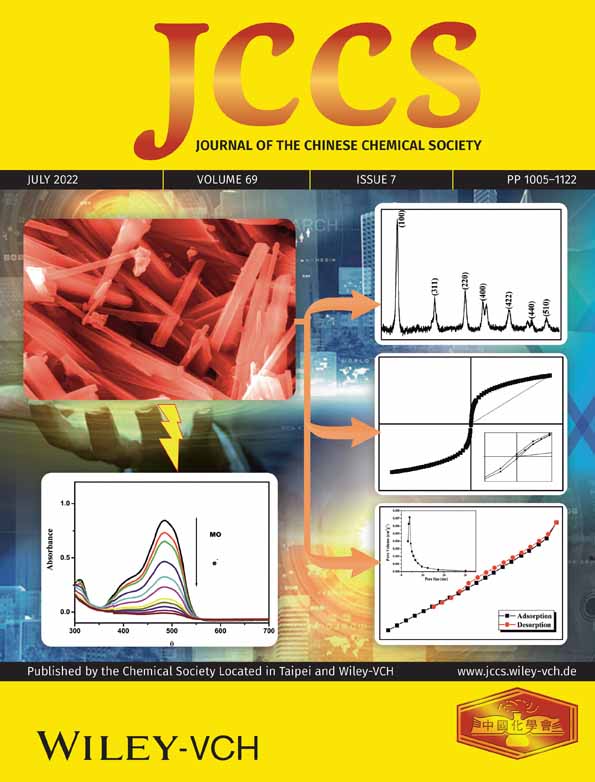Potentiometric determination of copper(II) ions based on a porphyrin derivative
Funding information: Tokat Gaziosmanpasa University, Scientific Research Projects Commission, Grant/Award Number: 2019/43
Abstract
A novel poly(vinyl chloride; PVC) membrane-based Cu(II)–selective sensor has been developed using synthesized 5,10,15,20-tetrakis(4-methoxycarbonylphenyl)porphyrin as an ionophore. The Cu(II)–selective sensor exhibits a Nernstian response for Cu(II) ion over a wide concentration range of 1.0 × 10−5 to 1.0 × 10−1 mol L−1 with the slope of 27.0 ± 2.5 mV/decade, and a lower limit of detection of 1.88 × 10−6 mol L−1. The novel sensor shows good repeatability and high selectivity for Cu(II) ions over other mono-, bi- and trivalent cations. The sensor potential response remains unaffected by pH in the range of 4.4–10.6 and exhibits a fast response time of less than 10s. Finally the developed Cu(II)–selective sensor has been successfully used as an indicator electrode in the potentiometric titration of Cu2+ against ethylenediaminetetraacetic acid and also in the determination of Cu(II) ion concentration in different water and beverage samples.




